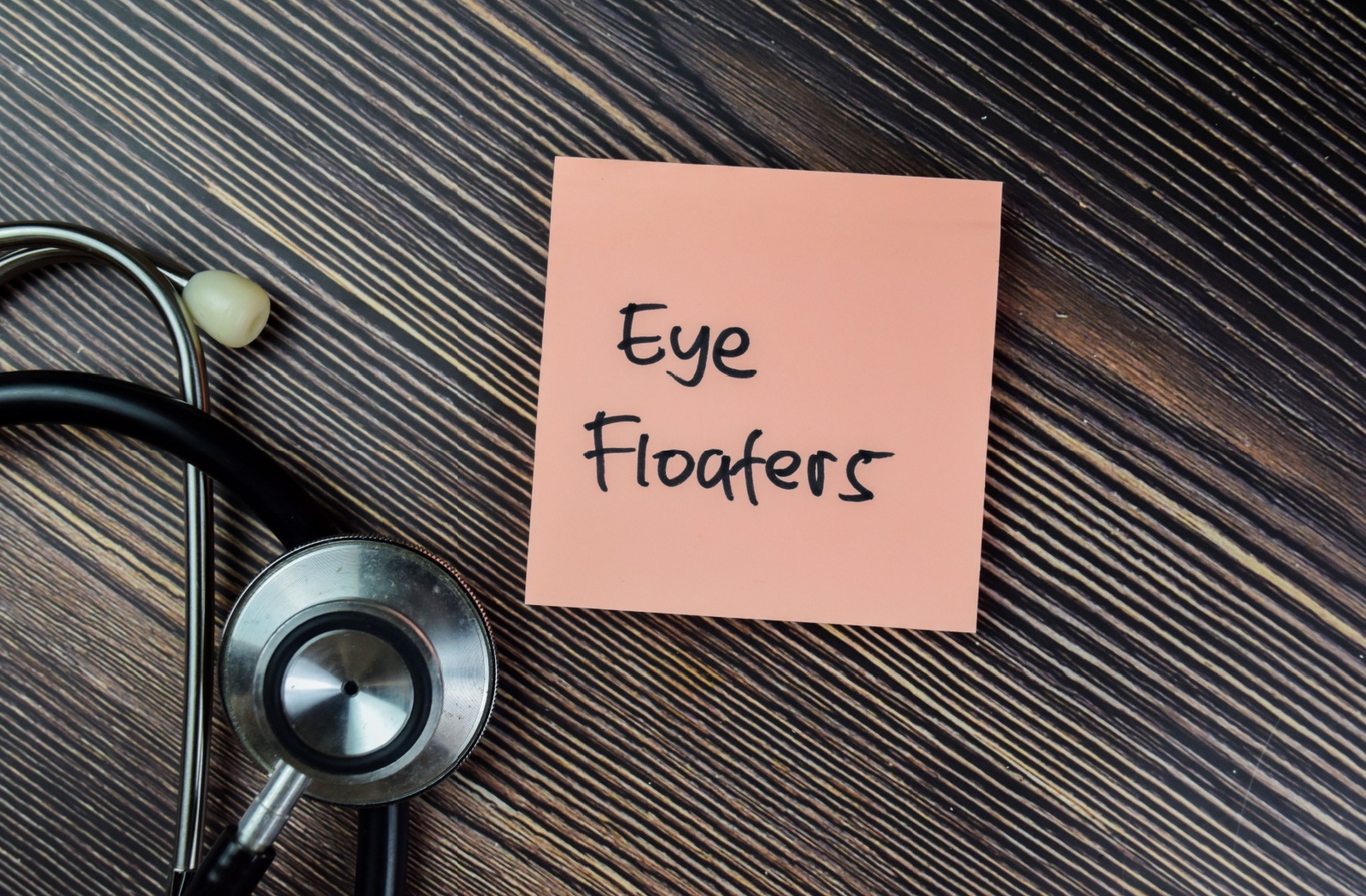If you’ve recently noticed tiny specks or cobweb-like shapes drifting across your field of vision, you’re not alone. These visual disturbances, known as floaters, are fairly common and can be particularly concerning for those with astigmatism.
But are floaters actually linked to astigmatism, or is something else at play? Simply put, while floaters and astigmatism can both affect your vision, they are generally not directly linked. Let’s explore the relationship between these two eye conditions and what you need to know to maintain optimal eye health for your next eye exam.
What Are Floaters?
Floaters are small, shadowy shapes that appear to “float” around in your field of vision. They are usually most noticeable when you look at a bright, plain background, like a blue sky or a white wall. Floaters are caused by tiny clumps of gel or cells inside the vitreous—the clear gel-like substance that fills the inside of your eye. These clumps cast shadows on the retina, which is why you see them.
Common Causes of Floaters
- Aging: The most frequent cause of floaters is the natural aging process. As you age, the vitreous gel starts to liquefy and shrink, forming clumps that can cast shadows on the retina.
- Eye Infections and Inflammation: Conditions like uveitis can cause floaters due to inflammation in the eye.
- Retinal Tears: A sudden increase in floaters could indicate a retinal tear or detachment, which requires immediate medical attention.
What Is Astigmatism?
Astigmatism is a common refractive error caused by an irregular curvature of the cornea or lens, leading to blurred or distorted vision. Unlike nearsightedness or farsightedness, which affect vision at specific distances, astigmatism affects vision at all distances. This irregular curvature prevents light from focusing properly on the retina, resulting in a blurry image.
Symptoms of Astigmatism
- Blurred or Distorted Vision at any distance
- Eye Strain or Discomfort after prolonged reading or screen time
- Headaches due to uncorrected vision problems
- Difficulty seeing at night
Are Floaters Linked to Astigmatism?
While floaters and astigmatism can both affect your vision, they are generally not directly linked. Astigmatism is a structural issue with the eye’s lens or cornea, while floaters are related to changes in the vitreous gel within the eye. However, it’s not uncommon for individuals with astigmatism to notice floaters, especially if they are more attuned to changes in their vision.
Why Might People With Astigmatism Notice Floaters More?
- Heightened Awareness: People with astigmatism often pay closer attention to their vision, making them more likely to notice floaters.
- Eye Examinations: Regular eye check-ups for astigmatism could bring floaters to attention sooner.
- Screen Time: Increased screen usage can make floaters more noticeable, and people with astigmatism might spend more effort focusing on screens.

When to See a Doctor
While occasional floaters are usually harmless, there are certain situations where you should seek medical advice immediately:
- Sudden Increase in Floaters: A sudden burst of floaters, especially if accompanied by flashes of light, could indicate a retinal tear or detachment. This condition is serious and requires prompt medical intervention to prevent permanent vision loss.
- Loss of Vision: Any sudden loss of vision, even if temporary, is a medical emergency. This could be a sign of various underlying issues such as a retinal detachment, a blocked blood vessel, or even a stroke affecting the eye. Immediate assessment by an eye care professional is critical.
- Persistent Discomfort: If floaters cause significant discomfort or interfere with daily activities, it is important to consult with an eye care professional. Persistent floaters can be distracting and may indicate an underlying condition that needs to be addressed, such as inflammation, bleeding within the eye, or other ocular issues.
Remember, your eyes are incredibly valuable, and any sudden changes in vision should not be ignored. Regular check-ups with your eye care provider can help maintain eye health and catch potential issues early.
Maintaining Eye Health
Whether you have astigmatism, notice floaters, or both, taking steps to maintain good eye health is crucial for preserving your vision and preventing potential problems down the line. Here are some important strategies:
- Regular Eye Exams: Scheduling annual eye exams with an optometrist can help detect and address issues early. These exams can identify changes in vision, early signs of eye diseases like glaucoma or cataracts, and ensure your prescription is up to date.
- Healthy Diet: Consuming a balanced diet rich in vitamins A, C, and E, as well as omega-3 fatty acids, can support eye health. Foods such as carrots, sweet potatoes, spinach, citrus fruits, nuts, and fish like salmon are particularly beneficial for maintaining good vision.
- Protective Eyewear: It’s essential to use sunglasses that block 100% of UV rays to protect your eyes from harmful sunlight. Additionally, wearing safety glasses during activities like construction work, sports, or when using hazardous chemicals can prevent injuries that might damage your eyes.
- Screen Breaks: With the increased use of digital devices, taking regular breaks to reduce eye strain is vital, especially if you spend long hours staring at screens. Follow the 20-20-20 rule: every 20 minutes, take a 20-second break to look at something 20 feet away. This simple practice can help prevent digital eye strain and keep your eyes feeling fresh.
The Path Towards Eye Care
While floaters and astigmatism are not directly connected, being aware of changes in your vision is essential for maintaining eye health. Floaters are generally harmless but should be monitored, especially if there are sudden changes. Regular eye check-ups and a proactive approach to eye care can help you enjoy clear vision and healthy eyes.If you have concerns about your vision or need professional advice, don’t hesitate to schedule an appointment with an eye care specialist at Stonebridge Eyecare. Keeping your eyes healthy is a crucial step toward a better quality of life.










